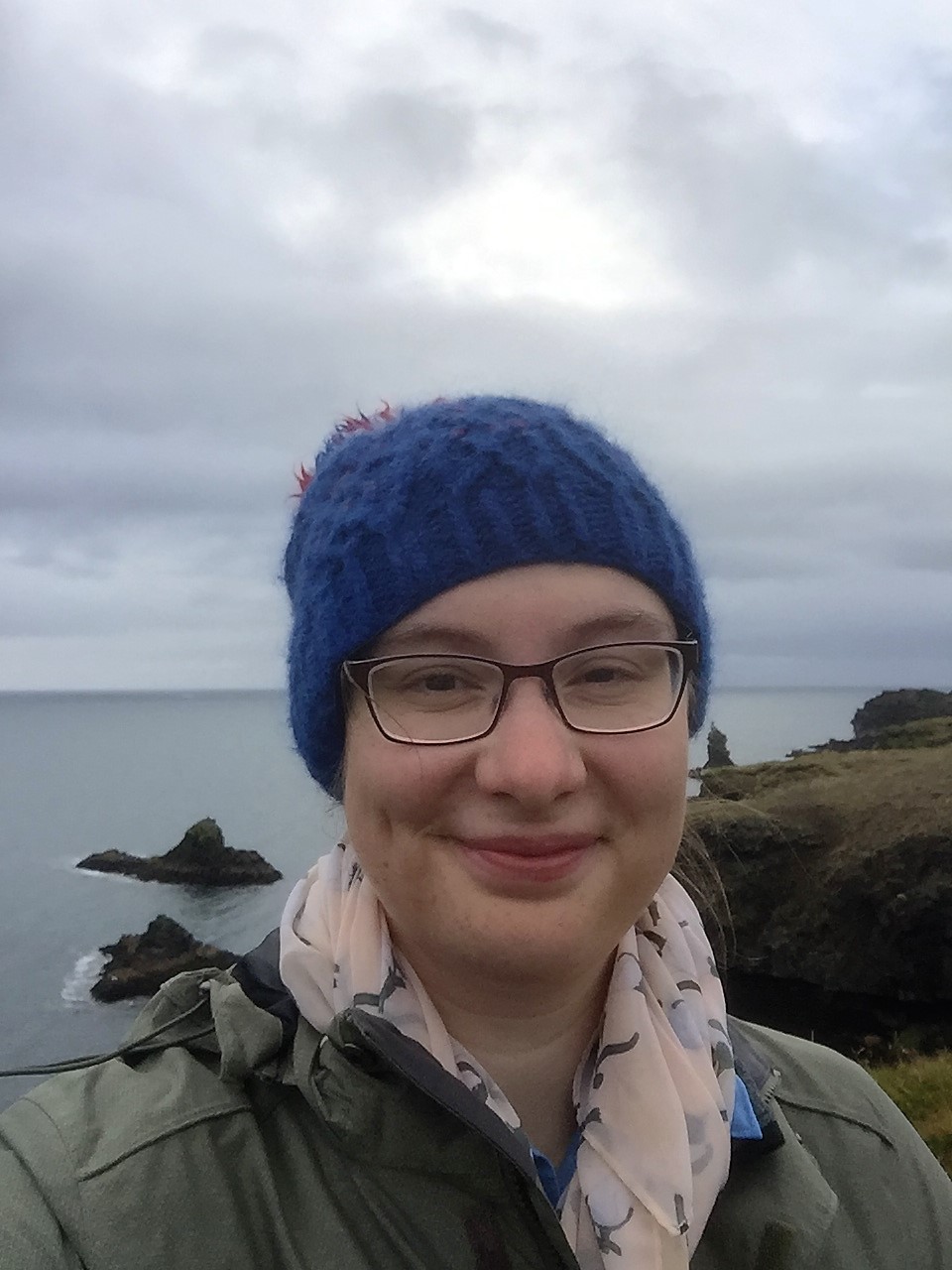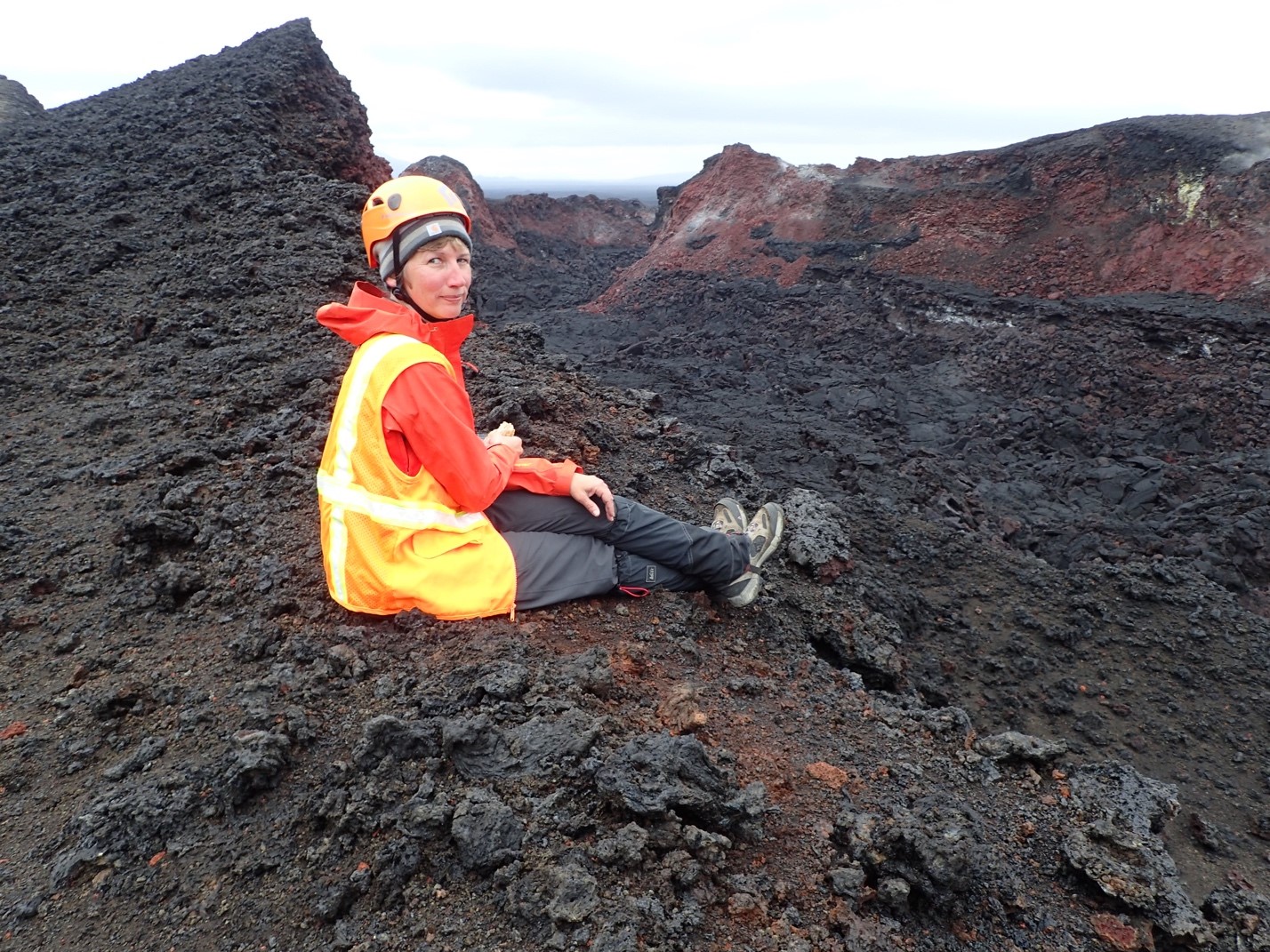Curson Travel Reports

Fourth-year student Margaret Landis used funding from the Curson Education Plus endowment for travel to Reykjavik, Iceland, to attend the 6th International Conference on Mars Polar Science and Exploration (Sept. 5-9), a conference typically held once every five years. The conference was small and included discussion sessions built into the flow of the conference. The poster sessions and additional moderated discussion times provided many opportunities for Margaret to interact with scientists from different institutions as well as representatives from the Mars Program Office: "In further discussing issues and ideas about my current project, I was able to not only present my work to the broader community at a key time in my graduate career, but also to get and give feedback on topics related to the polar layered deposits."
Margaret presented her current dissertation research on determining the surface age and current resurfacing rate for the North Polar Layered Deposits (NPLD), a geologic unit of the north polar ice deposit on Mars. Her research addresses a fundamental question in Mars polar science: what obliquity- and eccentric-forced climate record, if any, does the stratigraphy of the NPLD contain? By calculating the surface age using crater counts utilizing High Resolution Imaging Science Experiment (HiRISE) data, Margaret has been able to determine the age of the surface and estimate the current resurfacing rate based on two models of crater production at Mars.
Presenting this research at the conference in Reykjavik was a "key opportunity" for Margaret's professional development. New results presented by Mars climate modelers helped to expand her research focus from impact craters to thermal models, in order to understand the larger scale history of accumulation and ablation on the polar deposits—a critical step in the next stage of Margaret's work, which relies on temperature modeling of environments inside and outside of craters.
While in Iceland—an incredible analog laboratory for Mars—Margaret also participated in conference field trips to western Iceland, which has been shaped largely by the volcanic and glacial pasts of the island. The interaction between glaciers eroding volcanic landscapes as well as the current glacial retreat at Snaefellsjokull and examples of volcanic modification by water and ice were some of the topics discussed in the field. According to Margaret, "These types of modification features are difficult to find in the Tucson area, and attending the field trip portion of the conference expanded my understanding of glacial geologic features. Attending [the meeting] as a Ph.D. candidate provided me a chance to further develop my understanding of Mars polar science as whole, engage with the Mars polar science community, and attend field trips to analog sites that further developed my understanding of post-glacial landforms on Earth and Mars."
 Second-year student Sarah Sutton also applied her Curson award toward travel to Iceland. She attended the 2016 Terrestrial Analogs for Planetary Surfaces field campaign (July 11-August 8), led by LPL Assistant Professor Christopher Hamilton. Sarah's graduate research topics include a comparative study of channelized lava flows on Earth and Mars using field and remote sensing data. She studies the the morphology of channels in the Tharsis region on Mars using remote sensing data such as Digital Terrain Models (DTMs) and high resolution image data. The channels and flows in Tharsis are in some of the youngest volcanic terrain on Mars. The goal of this study is to understand the characteristics of the material that formed the channels, whether volcanic or fluvial. The significance of this work is to understand the tectonic-volcanic-hydrologic systems in Mars' recent history. To inform the processes related to volcanic channels, Sarah conducted field work during the summers of 2015 and 2016 in Iceland at two recent lava flows. The Laki lava flow (also called the Skaftá Fires) dates from 1783-1784. The Holuhraun flow occurred in 2014-2015.
Second-year student Sarah Sutton also applied her Curson award toward travel to Iceland. She attended the 2016 Terrestrial Analogs for Planetary Surfaces field campaign (July 11-August 8), led by LPL Assistant Professor Christopher Hamilton. Sarah's graduate research topics include a comparative study of channelized lava flows on Earth and Mars using field and remote sensing data. She studies the the morphology of channels in the Tharsis region on Mars using remote sensing data such as Digital Terrain Models (DTMs) and high resolution image data. The channels and flows in Tharsis are in some of the youngest volcanic terrain on Mars. The goal of this study is to understand the characteristics of the material that formed the channels, whether volcanic or fluvial. The significance of this work is to understand the tectonic-volcanic-hydrologic systems in Mars' recent history. To inform the processes related to volcanic channels, Sarah conducted field work during the summers of 2015 and 2016 in Iceland at two recent lava flows. The Laki lava flow (also called the Skaftá Fires) dates from 1783-1784. The Holuhraun flow occurred in 2014-2015.
The field work from the 2016 summer campaign included extensive geomorphologic investigations of the main channel in the Laki lava flow. Sarah took observations of ponded lava high stands and fresh rock falls to understand the final stages of the channel formation, as well as the continuing rates of degradation of the channel. At Holuhraun, she assisted in acquiring a survey of the main vent and proximal channel using a Riegl VX-400 LiDAR (provided by NASA's Goddard Space Flight Center). Post-processing of these data will result in a dense point cloud that Sarah will compare to the 2015 LiDAR survey data, which Sarah also helped collect, to measure channel degradation. At both sites, Sarah also assisted in the acquisition of GPS data, and photogrammetric images acquired from unmanned aerial vehicles (Phantom 3 and a UX5-HP fixed wing aircraft). With data from these systems, Sarah will analyze high resolution (down to cm scale!) topography and map features on the flows not visible from the ground.
Sarah had a productive field season: "The opportunity to conduct field work and learn new skills in terrestrial geomorphology is an important part of my graduate research plan. Field work at terrestrial analog sites provides me with an essential understanding of geologic processes that inform the planetary work I'm doing with remote sensing data sets of volcanic terrains on Mars. "

